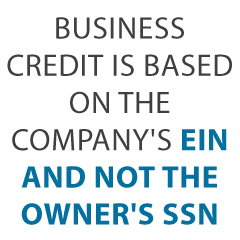- Connect With Us!
- (877) 600-2487
- info@creditsuite.com
Decoding Equifax’s Credit Risk Score
Published By Janet Gershen-Siegel at November 4th, 2017
Equifax’s Risk Score is a product developed by this credit reporting agency to help businesses understand what it is they are getting into. So this is with references to businesses (and even people) when it comes to loaning money or extending credit. The concept behind it is to show the risk of a default within a set period of time. It’s time to start decoding Equifax credit risk score.
Decoding Equifax Credit Risk Score: The Credit Risk Score in a Nutshell
Equifax’s Risk Score serves as an enhanced risk model. It is meant to aid in predicting the probability of a business becoming 90 or more days late within 24 calendar months.
This report provides a rank-ordered risk perspective. It is to try to support more informed credit decisions. And it’s also to help to minimize risk exposure and to increase portfolio profitability. The idea is to strengthen a business across all portions of the life cycle of an account. Do so with comprehensive scoring tools backed by available Equifax business credit information.
Decoding Equifax Credit Risk Score: Deeper Credit Evaluation Drives Smarter Credit Decisions for Creditors
The Equifax Risk Score is designed to deliver a multi-faceted business viewpoint. So it is based on factors such as depth of credit information, length of credit history, and delinquency history.
Five separate scorecards are broken down with a combination of statistical analysis and business requirements. This is in order to create the most comprehensive business perspective the company can possibly provide. The Equifax Risk Score is meant to help pinpoint new marketing and cross-sell opportunities. It can also help to identify areas of risk exposure when it is combined with the Equifax Bankruptcy Navigator Index.
With the Equifax Risk Score, the company provides a predictive perspective. So this is in order to help in speeding up credit decisions. While at the same time it adds a layer of protection against risk at every point in the life cycle of the account. The Equifax Risk Score is meant to help businesses to increase their targeting precision. It can help them to appreciate new expansion opportunities, and streamline their collections efforts. It can also help to mitigate their risk exposure with powerful scoring insights.
Decoding Equifax Credit Risk Score: Key Benefits for Creditors
The key benefits are as follows:
Strengthen Portfolio Quality
When companies look to develop and build a portfolio of investments, the report is intended to help show which are the better investments. Or it can at least show which are the worst investments to avoid.
Learn more here and get started toward building business credit attached to your company’s EIN and not your SSN.
Increase acquisition
When better investment opportunities are shown by the report, companies presumably will be more interested in making investments
Manage Risk Exposure
This is for companies looking to extend business credit. The Equifax Risk Score is meant to better predict a late payment.
Drive More Effective Collections
For companies on the credit-giving side of the equation, the Equifax Credit Risk Score is a means of understanding which companies are the least uncertain credit risks. When a company only works with less risky debtors, then collections should be easier.
Decoding Equifax Credit Risk Score: What Debtors and Businesses Seeking Credit Need to Know
The Equifax Credit Risk Score is the product of company research and records. It comes from many of the same things which drive all business credit scores, namely:
- Time in business
- Credit utilization rate
- The number and amount of UCC blanket liens
- The number and size of liens and judgments
- Any bankruptcies on the record
- Payment history
- The number and size of delinquent payments, if any
- A comparison between the company in question and other, similar businesses within the same overall industry
Decoding Equifax Credit Risk Score: Improve the Score
Much like with all other credit scoring mechanisms, your small business will do best if you pay your debts on time and in full. And you should do so as often as possible. So this is 100% of the time, if that is at all possible. You will also need to keep your overall credit utilization rate at 30% or less of your total available credit. And try to avoid judgments, liens, and bankruptcies as well as you can.
Decoding the Equifax credit risk score also means looking at reports. Let’s also look at how you can navigate and improve your Equifax business credit report.
Decoding Equifax Credit Risk Score: Your Equifax Business Credit Report
Let’s consider your actual Equifax business credit report. It is in sections.
Company Identifying Information
The first area is for identifying information pertaining to your company, e. g. the business name, and its address and telephone number. But is also data such as whether or not your small business is a corporation. And it shows the date you first went into business. This part will also consist of the number of employees and your business’s yearly sales. This component will also show if there are any alerts. It is immediately below the date.
These initial sections serve as a synopsis of the remainder of the report.
Scores
The following part consists of two scores:
- Your small business credit risk score for suppliers and
- Your business failure risk score.
So #1 is what we’re working on for decoding Equifax credit risk score.
Public Records
Next off, the report shows public records. These consist of bankruptcies, judgments, and liens, and display the amounts, if any, and the filing dates of the most recent ones . This area also demonstrates how these matters were satisfied, e.g. if the lien was settled.
Credit Usage
The next component is a pie chart showing your business’s credit usage. It graphically shows which percent of your available credit line you are taking advantage of. And it has identifying labels which show how much each percentage truly is. So this is your credit utilization rate.
Learn more here and get started toward building business credit attached to your company’s EIN and not your SSN.
Credit Report Summary
In the summary section, the report presents the quantity of your business’s credit accounts, and the date these credit accounts became active. Plus it shows any amounts past due, and your most severe status within the last 24 months. So this is how slowly you have paid off your debts. It also has the single highest amount of credit extended, the median balance, and the average open balance.
All of these elements are split into financial and nonfinancial categories. They also list your business’s recent activity. This includes the number of new accounts opened or delinquent accounts, the number of inquiries, and the number of updated accounts.
This section also includes a line graph which represents a trend line showing your company’s average days beyond terms by reporting date. So this is for your nonfinancial accounts only. The report will point out the recent trend, and how many days, if any your company is behind terms. This section also shows your business’s payment index and contrasts it to your company’s business sector.
Financial Account Highlights and Details for the Most Recent 36 Months
This next sector adds basic information on financial accounts including commercial credit cards and leases, showing status; open and closed dates; original and current credit limits; balance; past due amount, if any; and your company’s 24-month history.
So it begins with highlights and then goes into detail.
The details subsection expands on the highlights part by adding information such as the payment amount and frequency. And it shows if a debt is secured. Secured vs. unsecured credit matters a good deal in case of a bankruptcy. This is because secured creditors get a favorable place in line for limited assets.
Financial Account Payment Details
This next part shows balances, past due amounts, aging categories, and dates of first delinquency, if any, for the most recent 12 month period.
Non-Financial Payment Credit Experiences and Status
The following part shows trade accounts and the like, and also includes balances, aging categories, and a 24-month history.
Public Records
Next up are public records. This section shows more in-depth information on judgments, liens, and bankruptcies.
Decisioning Details
The next piece shows the particulars of what went into your business failure risk summary report.
Learn more here and get started toward building business credit attached to your company’s EIN and not your SSN.
Additional information
The concluding piece of the report shows any DBA information and any related files. Plus it has any other more or less miscellaneous facts which may be in a report. So this can include comments.
Decoding Equifax Credit Risk Score: Improve Your Equifax Report
Since you know what goes into it, you can see what some of the crucial pieces of information Equifax inspects are. So these are public records, credit usage, and how you handle your financial and nonfinancial accounts. So clear your debts as fast as possible and don’t go delinquent. Keep your credit utilization within reason. So the best is less than 30% of your overall available credit.
And steer clear of overdue payments. Then you should have the chance to enhance your Equifax score. and start decoding Equifax credit risk score!

 " class="attachment-blog-single size-blog-single wp-post-image" alt="Get Business Credit Cards for New Businesses Credit Suite-Business Line of Credit Decoded" title="Get Business Credit Cards for New Businesses">>
" class="attachment-blog-single size-blog-single wp-post-image" alt="Get Business Credit Cards for New Businesses Credit Suite-Business Line of Credit Decoded" title="Get Business Credit Cards for New Businesses">>
